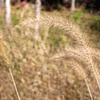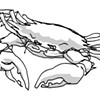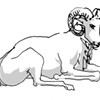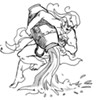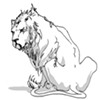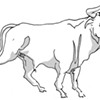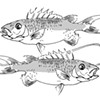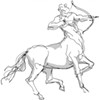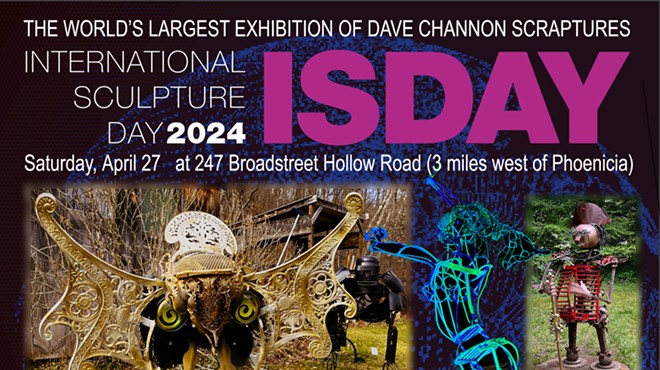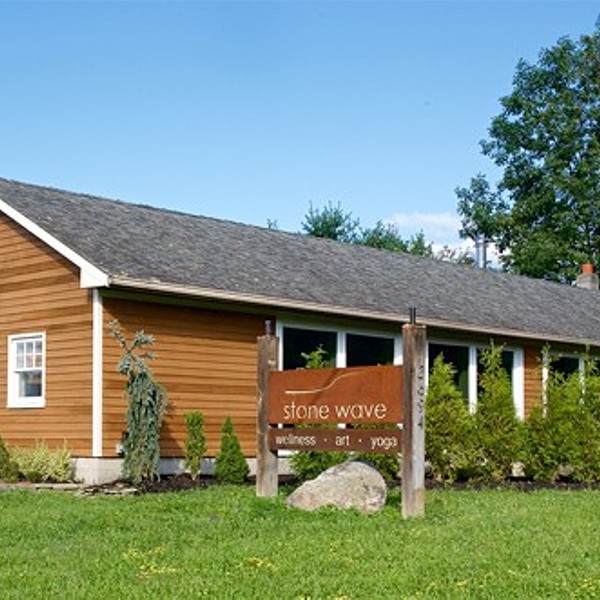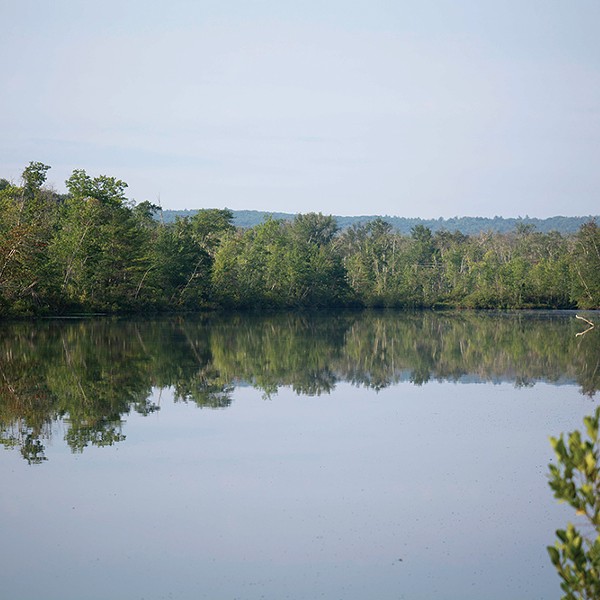Stating the Ominous
Silent Spring at 50
[]
Last month was the 50th anniversary of the publication of Silent Spring by Rachel Carson. This is the book that not only started the modern environmental movement; it defined the notions of the “environment” or “ecosystem” as we think of them today. Though it’s difficult to believe, prior to Silent Spring, those concepts did not exist in public consciousness.
Fifty years is a special cycle in astrology—that of Chiron, the astrological patron of healing, holistic consciousness and the environment. Silent Spring is about to have its Chiron return. That means that the modern environmental movement is having that same transit, which is a significant rite of passage.
Today, most people have heard the book’s title, though I’ve been asking around and so far I have not found anyone younger than I am who knows what it’s a reference to.
A marine biologist and avid birder who became a naturalist author, by the time Silent Spring was published, Rachel Carson had already written three bestsellers and had won the National Book Award For Nonfiction with her 1951 book The Sea Around Us. Her writing career grew out of working for the publications office of the US Fish and Wildlife Service, where she was editor in chief.
Following up a longstanding interest, she began to focus her efforts on pesticides in the 1950s. This was the era when chemistry was going to solve every problem and save the world from the evils of nature. But Carson was suspicious, and had been collecting data about potential problems since before World War II. Her research resulted in Silent Spring, which exposed the dangers of broadcast spraying of pesticides and herbicides, principally the insecticide DDT.
The military, the US Department of Agriculture, and various industries were busy pouring tons of the stuff onto cities, towns, suburbs, farms, and wilderness areas, telling everyone that it was perfectly safe. In one propaganda film, a British public health official is trying to convince an African chief and his tribe that DDT isn’t toxic. At the time it was being used to kill malaria mosquitoes. He has the chemical sprayed onto a bowl of hot cereal, which he then eats. But the chief refuses to accept that the insecticide is safe.
Carson was the first to note that DDT not only killed insects; it acted as what she called a biocide, often wiping out the entire ecosystem where it was sprayed. The interconnection between the levels of nature is what we think of as “the environment.”
Writing with a vivid appreciation of the beauty of nature, Carson describes how, after airborne spraying of the insecticide, contaminated leaves would fall to the forest floor and be eaten by worms, which would then be eaten in large quantities by birds. The DDT would concentrate in the birds’ bodies (through a process called biomagnification), poison them, and then the forests would fall silent—hence the book’s title.
Until this time nobody had explained from a scientific standpoint that all of nature is related in a complex web of life. Though Carson had been making that point in her earlier books, when she pointed out that those webs of life were being murdered by the chemical fogs, people started to notice.
“These sprays, dusts, and aerosols are now applied almost universally to farms, gardens, forests, and homes—nonselective chemicals that have the power to kill every insect, the ‘good’ and the ‘bad,’ to still the song of birds and the leaping of fish in the streams, to coat the leaves with a deadly film, and to linger on in soil—all this though the intended target may be only a few weeds or insects,’’ Carson wrote.
A condensed version of the book was first published as a series in the New Yorker in June of 1962 and the full book came out that autumn.
Industry and government response to Silent Spring was immediate and scathing, declaring a kind of national emergency and attempting to discredit Carson as an hysterical nature freak. The response of industry only pushed the book higher up the bestseller list.
She was accused of being part of a cult—that freaky religion of people who love nature. Carson wrote “not as a scientist but rather as a fanatic defender of the cult of the balance of nature,’’ said P. Rothberg, president of the Montrose Chemical Corporation of California, a manufacturer of DDT. Notably, in Silent Spring Carson never calls for a ban on DDT, only its carefully controlled use when necessary.
Regarding Carson’s book as “an opportunity to wield our public relations power,’’ Monsanto Chemical Company, a manufacturer of herbicides, pesticides and PCBs, published a long parody of Silent Spring, The Desolate Year, portraying nature as evil and depicting the horrors of a world without chemical pesticides. The company distributed 5,000 copies of it to newspaper editors and book reviewers all over the country.
Monsanto had reason to worry. At the time, the company was making most of its money on chemicals similar in behavior, composition and toxicity to DDT, called PCBs, and subsequent lawsuits revealed that the company was lying to everyone about their dangers.
The writing and the message of Silent Spring were so powerful that the book got the attention of then Pres. John F. Kennedy, who referred it to his Science Advisory Panel. They studied the scientific assessments in the book and a year later determined that Carson’s work was based on valid toxicology. This led to a 1972 ban on DDT in agricultural use in the United States—though not until after 600,000 tons of the stuff had been dumped on the environment. Once the DDT issue was raised to public awareness, many other events followed, which helped raise awareness of toxins and begin the process of regulating them.
In 1964, Swedish scientist Dr. Soren Jensen, inspired by Carson’s work, was studying DDT levels in human blood when a mysterious group of chemical compounds kept recurring in his samples, interfering with his analyses. The chemical was so pervasive that his first task was to determine whether it was natural or synthetic.
A two-year investigation established that the mystery compound was manmade, chlorine-based and chemically similar to DDT. Jensen knew it wasn’t a pesticide because he found it in wildlife specimens collected in 1935, years before chlorine-based pesticides were in general use. All of Sweden and its adjacent seas were contaminated, he discovered; even hair samples taken from his wife and three children showed traces of the compound, with the highest levels in his nursing infant daughter. The mystery pollutant was everywhere he looked.
Jensen told me in a 1993 interview for Sierra magazine, “I was convinced that what I had to deal with were chlorinated biphenyls, but I didn’t have the faintest idea where such compounds were used in the society.” Searching the literature, Jensen learned of PCBs’ industrial uses. A German chemical manufacturer provided Jensen with a sample, which he analyzed and found to match the “peaks,” or chemical readings, found in a massively contaminated white-tailed eagle.
“The circle was closed,” Jensen said. “There was no doubt that the unknown peaks came from the use of polychlorinated biphenyls, which I gave the name PCB.” As a direct result of Carson’s work on DDT, PCBs were banned by the Toxic Substances Control Act (TSCA) of 1976, just four years after the ban on DDT. Both chemicals are so persistent in the environment that they still turn up in samples of human blood and breast milk.
The problem with the TSCA and its successors is that despite the current obsession with fetal rights, Congress will not allow the words “fetus” or “embryo” into the language of the law, and it’s the as-yet-unborn who are hurt the most.
Dr. Theodora Colborn is sometimes credited with writing the modern version of Silent Spring, a 1997 book she co-authored, called Our Stolen Future. Colborn studies the issue of persistent toxic compounds for their effects on the human endocrine system, which regulates hormones that influence reproduction, emotions and every organ in our bodies. All of these chemicals are carcinogenic, though that’s considered a high-dose effect. At extremely low concentrations—for example, the parts-per-trillion level—the chemicals function as hormonal toxins.
Colborn’s work, developed in the decades after Silent Spring, determined that thanks to DDT, PCBs, benzene-based plasticizers including BPA ,and many heavy metals, we are all swimming in a sea of hormone-disrupting chemicals. Unlike natural hormones, hormone disruptors tend to be extremely persistent, lodging in the liver and other organs, creating cascades of reactions.
Because a healthy body is so dependent upon endocrine balance, hormone disruptors are associated with nearly every medical condition. These include reproductive issues, miscarriages, birth defects, endometriosis, and many forms of cancer.
“Silent Spring acknowledged that the entire ecosystem was being destroyed, that DDT was affecting all life on Earth and there was nothing that was not being affected,” Colborn said in an interview for Chronogram. “Carson was using her research on animals that was quite strong.”
“Rachel Carson began to create an awareness that we should have had innately. We became aware of the obvious things around us. Yet we could make these chemicals that we could not see. If humans are going to survive they are going to survive because they’re going to understand what they’re actually doing when they’re fooling around with chemicals that were never in the environment before. It’s taking us too long and too many people too late to realize this.”
Colborn noted that “there are two places in Silent Spring where Carson has just one sentence: I wonder what’s happening to the babies in the wombs of the women who are exposed to these chemicals. If she only had a chance to live three or four more years, she would have caught on to the endocrine disruption and the transgenerational transmission of these chemicals.” The effects of many endocrine disruptors can be passed down for seven generations (scientific validation of the name of the chlorine-free paper product brand, which is based on an Iroquois concept).
Had she lived long enough, Colborn speculated, Carson would have made these discoveries on her own. But she died at the peak of her influence of complications arising from breast cancer in April 1964.
“I myself never thought the ugly facts would dominate, and I hope they don’t,’’ Rachel Carson wrote to a friend as she finished writing Silent Spring, quoted in the 1980 book Speaking for Nature by Paul Brooks. “The beauty of the living world I was trying to save has always been uppermost in my mind—that, and anger at the senseless brutish things that were being done. I have felt bound by a solemn obligation to do what I could—if I didn’t at least try I could never again be happy in nature. But now I can believe I have at least helped a little. It would be unrealistic to believe one book could bring a complete change.’’
This was probably the most erroneous prediction that Carson ever made. Her one book did bring a massive change in the way pesticides were used and regarded by both governments and people. For a time, it even seemed possible that precautionary policy—that is, avoiding danger and factoring in for worst-case scenarios—would replace reckless uses of “economic poisons.’’
While that did not happen, Carson demonstrated what one person can do. Though I don’t have space to go into her astrology here, I can say this: She came from the place of a deep connection to life and existence, yet with her roots in the unseen world. Carson was a mystic in the deepest sense of the word, and her ability to bridge the worlds of mysticism and science is something that today we would describe as “shamanic.”








